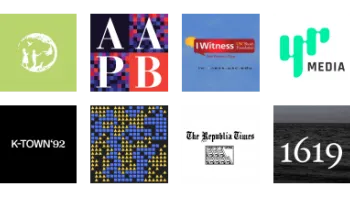Take a look inside 5 images
East of the Rockies
Pros: Creative AR approach to this story; effectively intertwines a historical narrative, primary source documents, and SEL skills building.
Cons: Slow-pace might challenge students' attention spans; while there are choices to be made, the results are predetermined.
Bottom Line: Culturally rich and emotionally moving, with purposeful opportunities for interactivity.
In 1-to-1 classroom settings (with iPad or iPhone), East of the Rockies offers a way for students to connect with and reflect on the internment of Japanese Canadian residents and citizens during World War II. It can offer an introduction to the history of internment or add an additional layer to a previous lesson. Due to the user-friendly design, students can and should proceed and progress at their own pace. This will take some time -- well over 30 minutes from start to finish, depending on how quickly students click through. Also note that the story addresses tough topics like racism, death (including a miscarriage), and discrimination.
Here are some ideas for how to support students' learning:
-To assess learning and encourage reflection, provide quick-write or small group discussion prompts at the end of each of the three stages.
-Use double-entry journaling to get students to pause and reflect on powerful or meaningful quotes they come across, and better process the content.
-Get students to more deeply analyze primary source documents they find using a graphic organizer.
-If your students have already -- or will later -- learn about Japanese American internment, have them use a concept map -- like a Venn diagram or double bubble -- to process the similarities and differences between the two events.
In addition to ideas above, the East of the Rockies website offers downloadable lesson plans and supplemental resources.
East of the Rockies is a story-driven iOS app about Japanese Canadian internment camps during WWII. It uses augmented reality (AR) to bring the story and journal of Yuki, a 17-year-old second-generation Japanese Canadian (or Nisei), to life. Yuki's story was written by author and activist Joy Kogawa, a former internee.
The experience is told from the perspective of Yuki's journal (via voice and text-based narration), as the player looks down on diorama-like settings from before, during, and after her family's forced relocation to Slocan internment camp. It may feel slow for some students, since it's guided by the methodical and poetic narration of Yuki's journal. However, this pace allows students to reflect and process the meaning of the scenes. As the story progresses, players interact with various objects in the world -- for example, playing a record or packing a suitcase. To supplement the journal, students unlock access to primary source photos, letters, newspaper clippings, and more. These provide more in-depth historical information and context.
This is a excellent choice for educators wanting to give their students a deeper perspective on WWII internment camps. Teachers can trust that Joy Kogawa's writing, which comes from personal experience, offers a sensitive perspective on this tragic and shameful event in Canadian (and U.S.) history. While it's slow and deliberate -- and could challenge kids' attention spans -- it's also highly accessible due to the AR interactivity, captioned voice narration, and pause feature. The story offers compelling and touching details that will hopefully help students relate. Still, while Yuki's story is interesting (and relatable, given that she's 17), it would've been nice to get a little more insight into the other characters' perspectives. However, it's ultimately understandable, given the focus on Yuki's journal.
The learning feels multidimensional, as every interaction uncovers new layers of learning: from just interacting with an object and learning about it to completing mini-activities like packing a suitcase, tending to crops on a farm, or chopping carrots. While these things might seem trivial, they help build empathy and provide variety. This style of light interactivity serves the story well (keeping it from getting too game-like and undermining the message), but some students might think it's too simplistic and yearn for a bit more. With teacher support, however, they'll hopefully respect what the experience is trying to accomplish and why it's designed the way it is.












